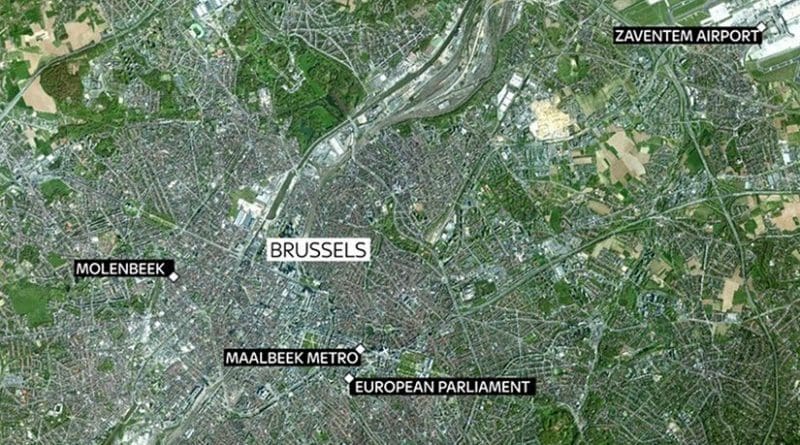Brussels Attacks: Challenge To Security And Coexistence – OpEd
By Fernando Reinares*
Belgium stopped bombing Islamic State (IS, also known as ISIS) targets in Iraqi territory at the end of June 2015. The country had joined the international coalition against the Jihadist organisation in September of the previous year, but by then it was already in the terrorists’ sights. When, shortly after the proclamation of the supposed new Caliphate, in June 2014, the command of external operations for IS decided to establish an operations network to carry out attacks in Western Europe, Brussels and its environs became its base. And something else besides.
It is in Brussels and in this environment, in the district of Molenbeek, that for over a decade there has been a Jihadist subculture in which agents of radicalisation and recruitment linked to such entities as Sharia4Belgium have been able to move and operate with ease. It will be remembered that the core of the unit that the Moroccan Islamic Combatant Group (GICM) inserted into the 2004 Madrid train bombing network lived and was arrested in Molenbeek. It is also where the first written evidence came to light, dated 19 October 2003, of the date chosen for the attack in Madrid.
It is hardly surprising that Belgium is the European Union country where the current Jihadist movement, spurred by events in Syria and Iraq, is at its most fervent. No other country has produced so many foreign terrorist fighters relative to its total population or the size of its Muslim community. In Belgium’s case, such fighters number 562 as of February 2016, of whom a quarter, according to the Belgian authorities, have returned to the country. A year ago, in March 2015, the number of people held in Belgian prisons for activities related to Jihadist terrorism was 61, a fourfold increase on the figure for 2014.
The attacks carried out in Paris last November were conceived and planned in Syria but prepared in Belgium. A Belgian city however, in all likelihood Brussels, was the target initially selected by the IS operations network in Western Europe. This became clear on 15 January 2015, when an anti-terrorist operation in Verviers thwarted the plans of a cell made up of no fewer than 10 terrorists, some of them newly-returned foreign fighters, linked to the IS leadership. It was a cell that, as was subsequently confirmed, formed part of that operations network.
The attacks in Brussels, as in Paris, are an attempt to instil fear in the hearts of European citizens, forcing them to change their behaviour and to shape the decisions of their governments. It also involves attacking the capitals of two European countries with substantial Muslim communities and significant second-generation populations living in precarious circumstances, a social structure that is especially vulnerable to the schism the terrorists seek. We have to avoid the spread of Islamophobia without losing sight of the challenge that both the Jihadists with their terrorist outrages and the Salafists with their anti-democratic preaching pose to open societies.
About the author:
*Fernando Reinares, Senior Analyst on International Terrorism at Elcano Royal Institute | @F_Reinares
Source:
This article was published by Elcano Royal Institute and the original version in Spanish: Atentados en Bruselas: Desafío a la seguridad y la convivencia

